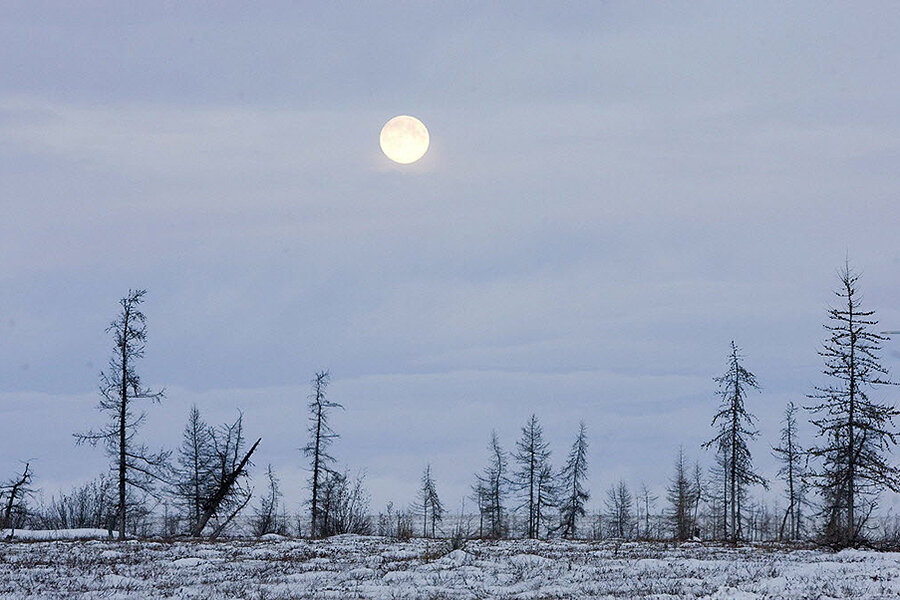Mystery: Why are giant snowballs turning up on Russian beaches?
Loading...
Residents in parts of western Siberia started noticing a strange phenomenon several weeks ago in the icy Gulf of Ob – hundreds of mysterious snowballs that looked like they might be more at home in a giant snowball fight than an icy sea.
Yet although locals were baffled to discover the frozen orbs floating along the shore, the phenomenon is rare but not unheard of.
"It is a rare natural phenomenon," the Arctic and Antarctic Research Institute’s Sergey Lisenkov told the Siberian Times. "As a rule, grease ice forms first, slush. And then a combination of the action of the wind, the outlines of the coastline, and the temperature may lead to the formation of such balls."
The ice balls first appeared several weeks ago. Measuring from about the size of a tennis ball to a much larger exercise ball, the snowballs washed ashore along an 11-mile stretch of Siberia's coast.
In some ways, the ice ball formation process is a familiar one to anybody who has ever built a snowman – instead of humans pushing snowballs around a snowy yard, in this case the wind is what really gets the ball rolling.
Locals say they have never seen snowballs like this before in their lives.
"Even old-timers say they see this phenomenon for the first time," said local leader Valery Akulov, according to the Siberian Times.
Other coastal dwellers around the world are familiar with the phenomenon, however. In 2010, the Chicago Tribune reported on a similar sight in Lake Michigan. A video released by the news outlet showed slushy spheres washing up on the Illinois lakeshore.
In 2015, another Lake Michigan video shows a man wading into the lake’s frigid waters to pick up a massive example of the phenomenon, a hefty ice ball the size of a basketball. NPR reports that across the country, in Maine, the same phenomenon occurred on a local lake.








